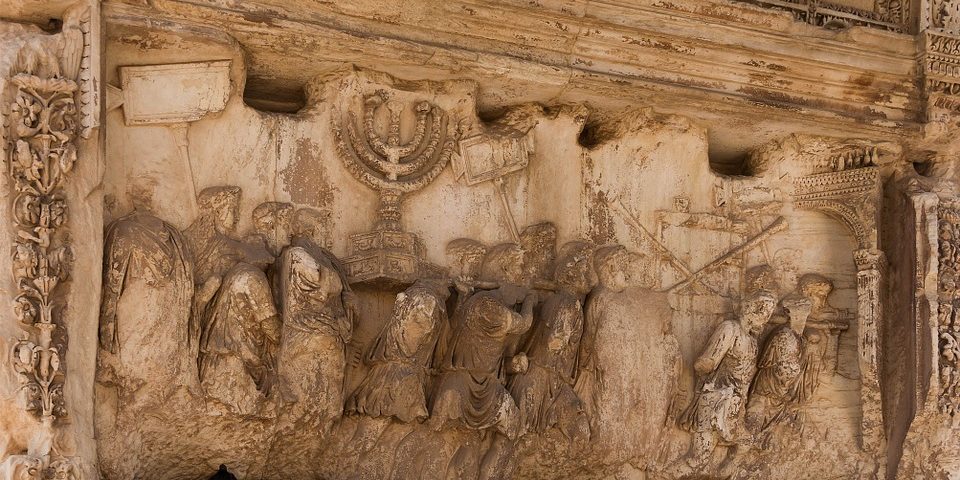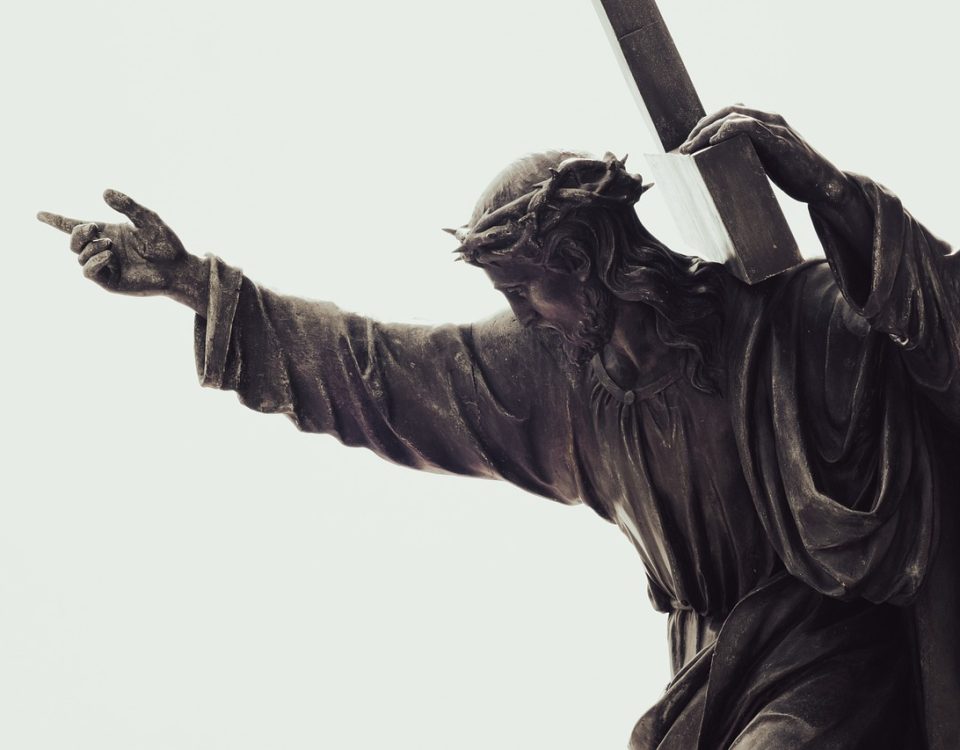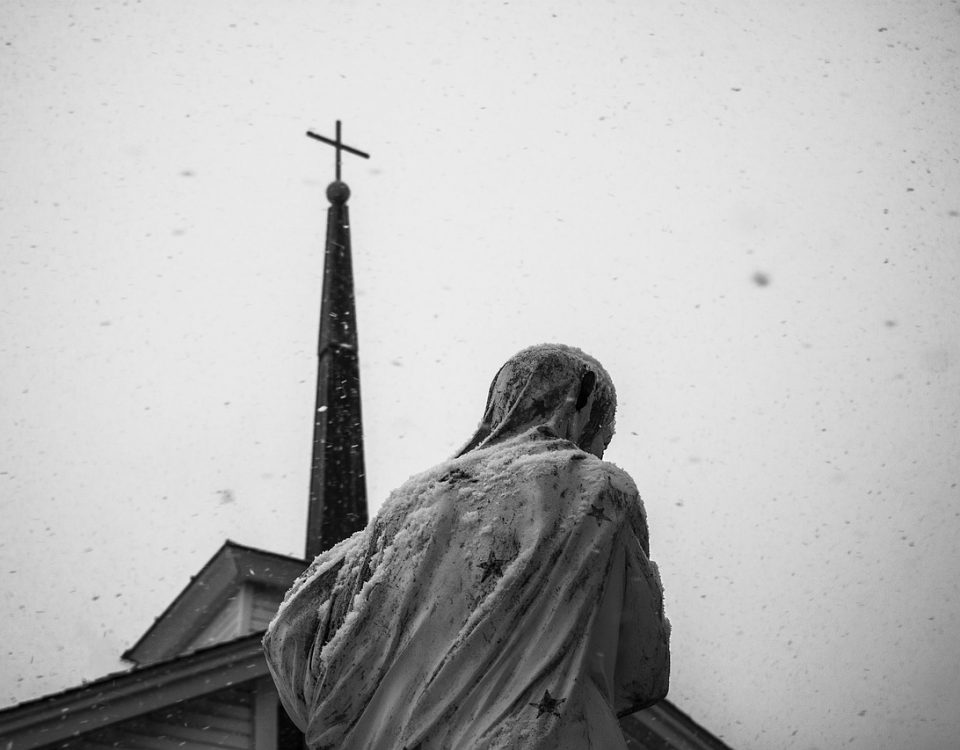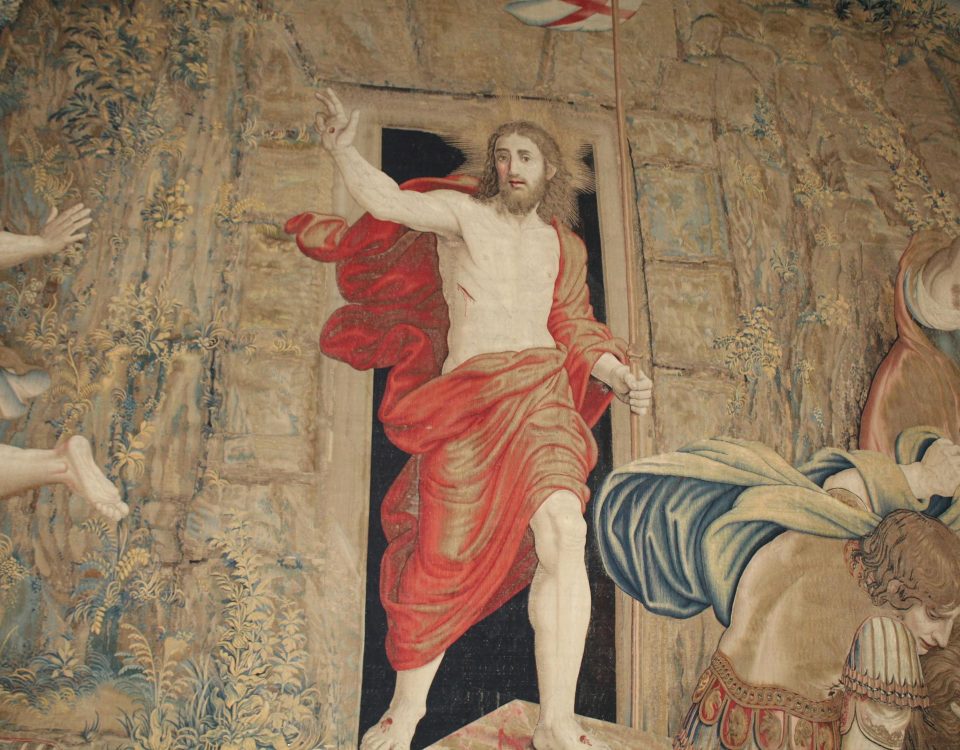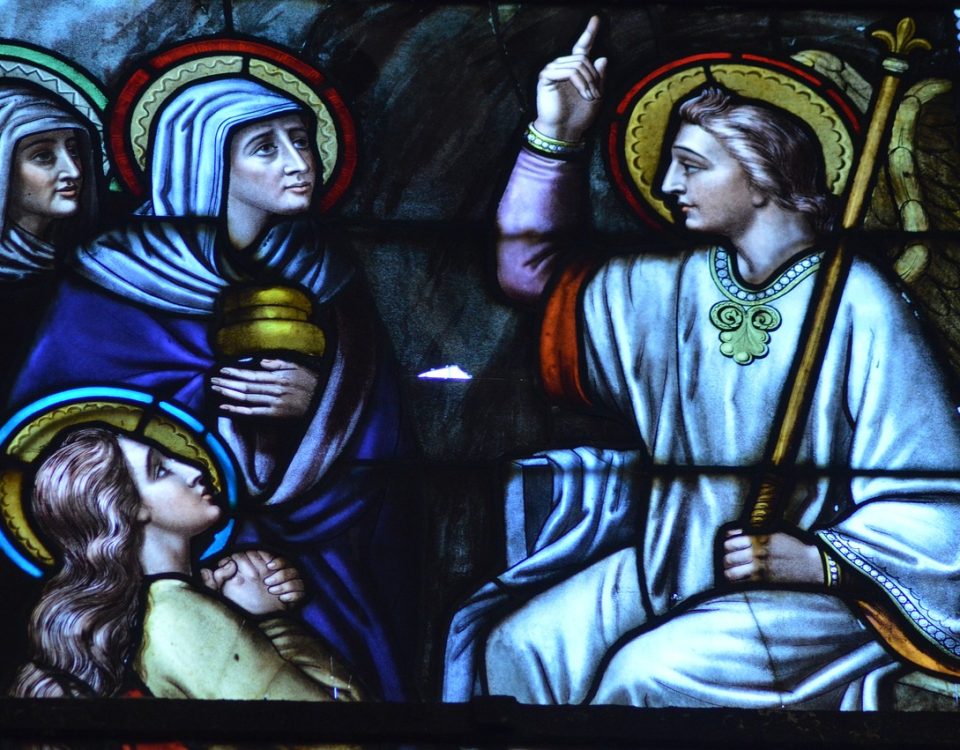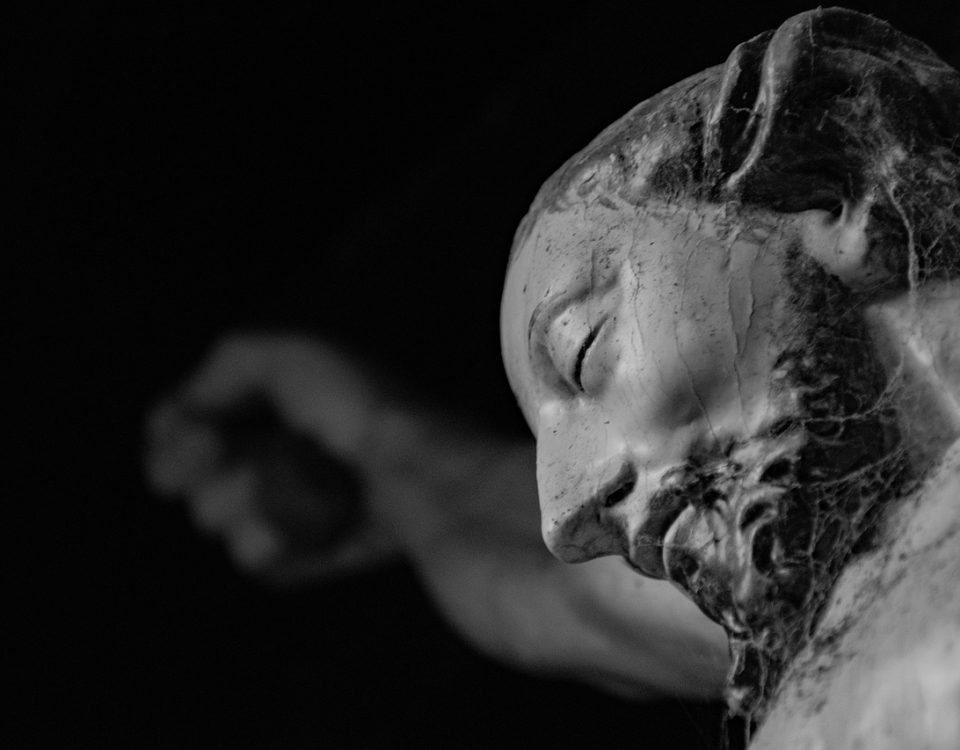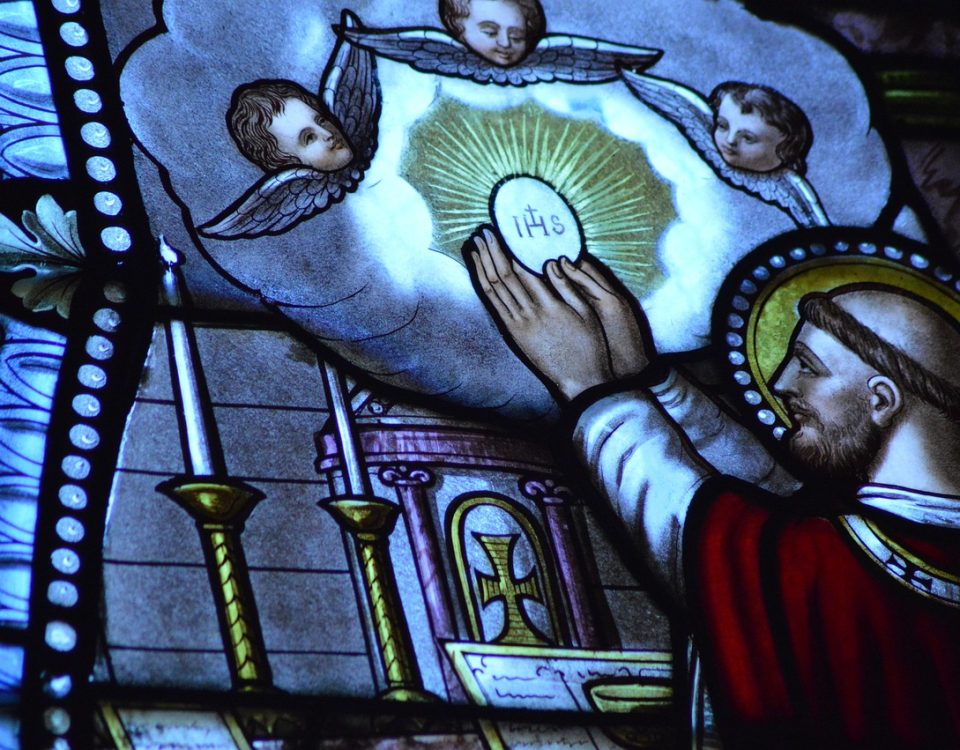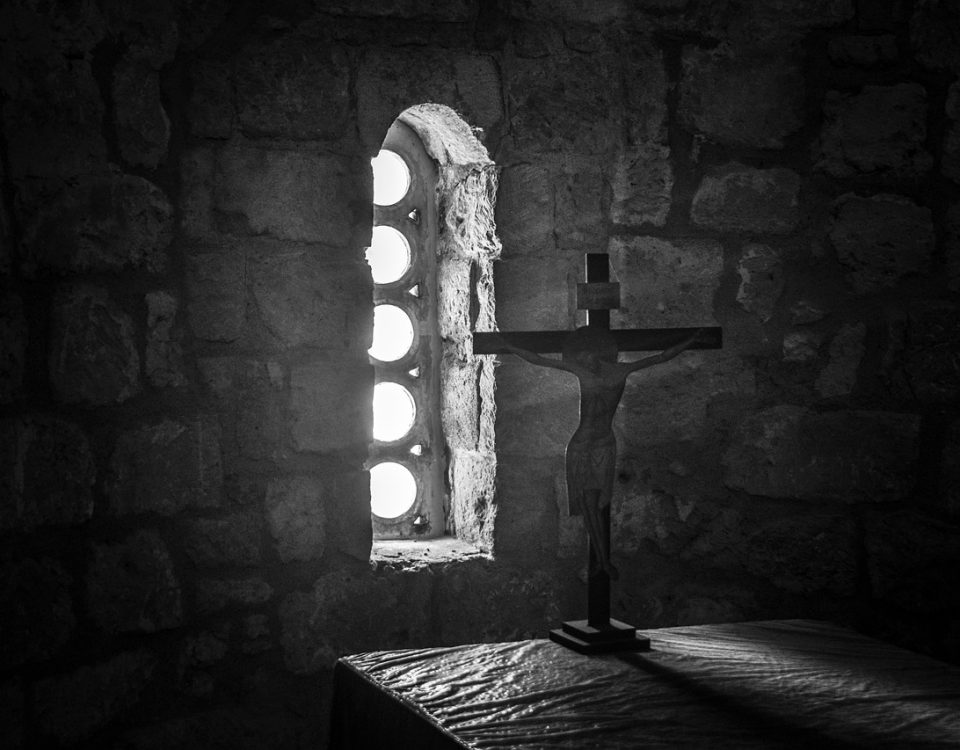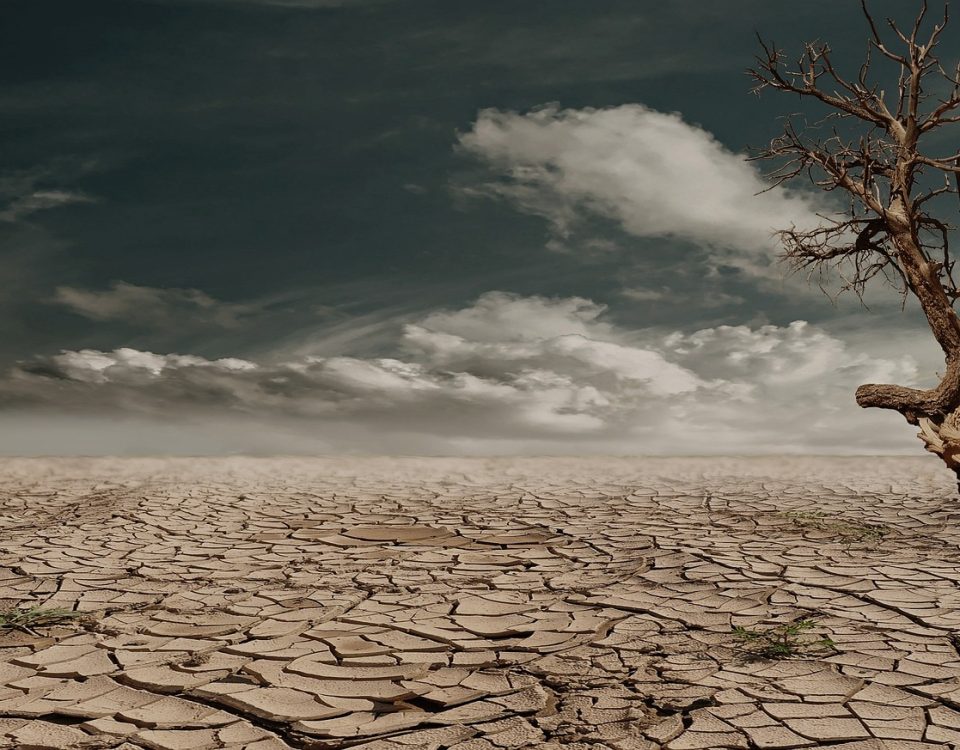“Few of the documents,” writes the historian John O’Malley, “bumped along such a rough road as Nostra Aetate.”[1] It’s a remarkable story—tense and dramatic—the story behind this very brief Declaration of the Second Vatican Council. It all began in September 1960 when Saint Pope John XXIII asked Augustin Cardinal Bea, a German Jesuit biblical scholar and (not insignificant for the discussion of this text) president of the newly formed Secretariat for Christian Unity, to facilitate the Council’s treatment of the Church’s relationship to the Jews.
It was remarkable that such a question should ever have been taken up by the Council at all. It was not a topic submitted by any of the bishops leading up to the Council although there were significant voices like Jacques Maritain, whose wife was a convert from Judaism, and others calling for greater understanding between Christianity and Judaism.[2] In France as Nuncio, appointed just after World War II, Pope John would have seen something at least of the legacy of confusion and complicity among Christians during the Holocaust, and so perhaps his experience had made him open to the idea of the Council saying something about the Jewish people and anti-Semitism. He had also recently met with the Jewish scholar, Jules Isaac, who had presented the Holy Father with the “Ten Points of Seelisberg,” a series of statements meant to help Christians combat the lingering and lethal pathologies (or should we say “memes”) of anti-Semitism. The Seelisberg conference in 1947 was a small conference of Christians and Jews come together for the express purpose of studying anti-Semitism, and it was the fruit of this conference which Isaac shared with Pope John and through him with the entire Council and eventually the world.[3]
But of course such a topic was instantly political and instantly controversial. The two great events of twentieth century Judaism (or really just of the twentieth century) were the Shoah and the foundation of the State of Israel, and so whatever the Council would say about her relationship with the Jews (which is how the question was first phrased) would inevitably be read in terms of these two events. Cardinal Bea (as does the final text) repeatedly insisted that the question was not a political one but a religious matter. But that did little either to prevent or settle controversy.[4]
Politically, the most significant issue was this: if the Vatican were to recognize the state of Israel or even say anything overly favorable about that newly formed nation (the Holy See wouldn’t establish full diplomatic relations with Israel until the early 1990s, and it is still a rather tense relation), then all the surrounding Arab countries might very well blame every Christian group in the Middle East (whether Catholic or not), provoking perhaps violent repercussions. Ecumenical observers emphatically reminded the Council that they were daring to speak on behalf of all Christians.[5] Instantly, the question of the Church’s relation to the Jews was taken to be a question about the legitimacy of Israel, and that was a politically very dangerous question for Arab Christians. Thus, the bishops of the Middle East immediately opposed the schema.[6] Who were some bishops, most of whom were ignorant of reality on the ground for Christians in the Middle East, to endanger an untold number of Christians—Catholic or otherwise—simply for the sake of saying something that would exorcise the demons of Europe’s past?
Yves Congar expressed just this concern in his Journal. “There is no doubt that a Declaration on the Jews would unleash a persecution with the burning of churches and the murder of Christians….And who would accept responsibility for unleashing a persecution against Catholics when it is not a matter of faith?” There was no doubt any such statement made by the Council would be misread, vulgarized, and exploited for political ends by different parties, and that those burning churches and killing Christians wouldn’t take the time to read a carefully nuanced text. It was perhaps naive to think such a document would ever be free of controversy. The production of this text was inevitably dangerous, which is why some wanted it withdrawn all together or perhaps inserted as a chapter in another document—minimized and buried a little.
But the Declaration would survive. Yves Congar’s conviction finally won the day. “Twenty years after Auschwitz,” he wrote, “it is impossible that the Council should say nothing.”[7] As the document moved through the chaotic machinery of the Council, it was of course debated and modified and expanded. Making the document more politically palatable, the text was broadened to include other non-Christian religions—namely Hinduism, Buddhism, and Islam. (The Church also undertook a significant diplomatic mission at the time, sending Cardinals all over the Middle East to meet personally with patriarchs, bishops, and Arab government officials.[8]) No longer was it a document about Catholics and Jews, it was now about the Catholic Church and all non-Christian religions. As a conciliar document, therefore, it had to offer something of a broader theological vision as well as offer a broader framework for all subsequent interfaith dialogue. This, in my opinion, is the good that came out of all the controversy—a better, broader document. It’s a document that has born more fruit than it would have otherwise done—I think—had it remained simply a text about “the Jews.” It’s a document of fired beauty, like in a kiln.
But it was first a question about the Jews. We are in the Jewish Ghetto here in Rome, a visible testament to why it was first a question about the Jews and why Congar said “it is impossible that the Council should say nothing.” Established in the 1550s by Paul IV, this ghetto was one of the first to emerge across Europe in the sixteenth century. Jews had for centuries lived in isolation precariously across Europe—to put it mildly. Although Jews were in civitate they were not de civitate, and so the fate of Jews depended upon local favor or local disfavor (it doesn’t take long to understand some of the deeper motivations of Herzl’s Zionism). Here in Rome, the ghetto was filthy and unhealthy, and Jews were forced to hear homilies in the Church of Sant’ Angelo in Pescheria until 1848. Even though Jews made the ghetto a sacred space, it was still a creation of hatred. We stand in a place that made Auschwitz plausible.
Cultures and crimes of anti-Semitism are written into the very fabric of European history—ever since John’s gospel spoke of “the Jews,” and ever since Luke’s gospel recorded Jesus’ words to the daughters of Jerusalem that they should weep not for themselves but for their children because, as the text says, “the days are surely coming.”[9] Although not a necessary conclusion of Christian scripture, anti-Semitism and an epoch of violence nevertheless followed. Maritain tried to describe this: how “hatred of the Jewish people…took its seat in the heart of Christian people.” Beginning as words or ideas—words like “deicide”—these notions took flesh in hatred along a “subterranean journey,” he said, “in the lowest strata of the soul and through the horrors of history.”[10] Blood libel, Simon of Trent, pogroms, ghettos, gas chambers. That’s the dark history we’d better not forget. Very quickly we can understand why the Church felt she had to say something.
But what did the Church say in Nostra Aetate? Firstly, she reminds us of one of the Church’s most fundamental tasks, that of “promoting unity” among individuals and nations. Hers is a theological, evangelical, and spiritual task—and less a political one—rooted in the faith that God created “the whole human race;” and that as we are all created by God, we are therefore all ordered to God as our “final goal.” Thus, the Church bids us to imagine and then work faithfully toward a “time when the elect will be united in the Holy City, the city ablaze with the glory of God, where the nations will walk in His light.”[11]
But of course the Church is not blind to the fact that there are seemingly innumerable religions in the world as well as an endless diversity of religious experience. Yet the Church does not let go of her theological vision of the “city ablaze with the glory of God.” Rather, she reasserts the need for “dialogue and collaboration.” One of the passages that grabbed headlines was,
The Catholic Church rejects nothing that is true and holy in these religions. She regards with sincere reverence those ways of conduct and of life, those precepts and teachings which, though differing in many aspects from the ones she holds and sets forth, nonetheless often reflect a ray of that Truth which enlightens all men.[12]
Now anyone who’s read anything of the fathers of the Church—of Origen’s notion of “spoiling the Egyptians” or Augustine’s De Doctrina Christiana[13] (one thinks this passage is almost a direct quote of Augustine)—is not surprised by this passage. It’s an ancient Christian attitude. But in the context of a post-imperial, post-War sense of globalism, it is indeed a remarkable and welcome reassertion of the Church’s view.
But it’s more than about appropriating the wisdom of other religions. Something deeper is going on. Dialogue is about receiving something elemental, something we need, from the other. Think about this passage:
The Church, therefore, cannot forget that she received the revelation of the Old Testament through the people with whom God in His inexpressible mercy concluded the Ancient Covenant. Nor can she forget that she draws sustenance from the root of that well-cultivated olive tree onto which have been grafted the wild shoots, the Gentiles.[14]
Notice the Church isn’t merely expressing gratitude or simply referring to her Hebrew heritage. Notice the Church speaks in the present tense when she says that the Church “draws sustenance from the root of that well-cultivated olive tree.”[15] What the Church is doing away with here is the theology of supersessionism, any sort of theology which de-Israelizes Israel, any sort of argument which suggests that since the Church has become the new Israel, the present day Israel is bereft of divine purpose. This was one of the great lessons learned in theology after World War II. And it’s a return to Paul.
But real dialogue cherishes honesty and accountability about the past. Regarding the Church’s hostile history with Muslims, the Council “urges all to forget the past and to work sincerely for mutual understanding.”[16] Perhaps the Council could have talked about forgiveness here.
The real controversy though surrounded anti-Semitism and the charge of “deicide,” the idea that the Jewish people were guilty of “killing God” in the crucifixion of Jesus. “Deicide” is one of those words, found among the writings of the fathers, which Maritain said took on the flesh of hatred.[17] And there was no small debate about whether or not the Church should finally acquit the Jewish people for this hazy and hateful, culturally concocted crime. Now the word itself—“deicide”—is nonsensically ambiguous. What exactly does it mean? It’s not a serious theological term; it simply refers to a species of hate. And so the Church spoke sufficiently when she declared in the document that “what happened in His passion cannot be charged against all Jews.”[18] This was what Maritain thought about it, saying of this sentence that by it the Church was “at last completely delivered” of the idea of deicide.[19]
But the Church had yet to speak out against anti-Semitism. Again the Church’s words here were not lightly debated. In Congar’s Journal he records Max Thurian’s (then sub-prior at Taizé and later a Catholic priest) words at a meeting of ecumenical observers. “Let us not be too pro-semitic,” he allegedly said.[20] At one point in the debate, each bishop received a sealed envelope with the message inside that Cardinal Bea was of Jewish descent. “Anti-semitism is not dead!” Congar wrote.[21] And indeed it was not.
Disavowing political motives, the final text says that the Church “decries hatred, persecutions, displays of anti-Semitism, directed against Jews at any time by anyone.”[22] Some bishops—and not a few of them American—didn’t think this statement strong enough. In addition to the verb deplorat many wanted et damnat in the text as well—an explicit condemnation.[23] This is one of the signs that this is certainly a negotiated document. But again, in context it’s a remarkable statement and welcome and courageous although not as strong as some would’ve liked.
So the Declaration, brief as it is, accomplishes a great deal. St. John Paul II said the Declaration signaled “turning point.”[24] It shares in the Catholic view of our common humanity and of our common destiny. The Declaration is genuinely theological. Through it the Church calls all people—not just Catholics—to dialogue, collaboration, and genuine theological study. And it leaves no room in Catholicism for religious hatred or bigotry. Given its context and the struggle over it—given that the Church simply didn’t shelve the document—I think it’s a remarkable text, and it’s a testament to the Church’s courage at the time. The Church didn’t have to say any of this, but she did. And she went through a lot to say it. That alone makes this a special text.
But what does all this look like on the ground? What does the Church look like after Nostra Aetate? Among Christian and Jewish theologians, it looks like real theology. In 2001 the Center for Catholic and Evangelical Theology put on a conference called “Jews and Christians: People of God,” bringing together Protestant, Catholic, and Jewish theologians who were committed to dialogue yet without “watering down distinctive beliefs to accommodate their partners.”[25] In 2000 over 200 Jewish rabbis and theologians put together the document called Dabru Emet (meaning “Speak the Truth”), a remarkable text offering a way for Jews to begin to appreciate Christianity theologically—a candid document which actually says that “through Christianity, hundreds of millions of people have entered into relationship with the God of Israel.”[26] (A statement strikingly similar to the Church’s self-understanding as it is encapsulated in the title of the Constitution on the Church—Lumen Gentium.) It looks like a theology committed to the truth but not so committed to control. “God is the author of the problem,” von Balthasar said, “and to him alone belongs its resolution.”[27] Or as John Paul II put it, the question is finally one for the Holy Spirit to answer.[28] Nonetheless, we should be people of integrity, prayer, and dialogue in the meantime, believing—to use von Balthasar’s famous image—that the Church and Israel ultimately “are two chambers of the one heart that beats, which indeed beats on the cross of the world.”[29]
What this looks like in action, of course, can only be discovered by those who live faithfully in the daily creativity of charity—often under great criticism, especially regarding the Church’s relationship with Islam. On his papal visit to Turkey in 2006, Benedict XVI made an unscheduled visit to Istanbul’s famous Blue Mosque. He made headlines—inspiring some and frustrating others—simply by stopping to pray. Later, he described the moment as one of providence:
[D]ivine Providence granted me, almost at the end of my journey, an unscheduled visit which proved rather important: my visit to Istanbul’s famous Blue Mosque. Pausing for a few minutes of recollection in that place of prayer, I addressed the one Lord of Heaven and earth, the Merciful Father of all humanity. May all believers recognize that they are his creatures and witness to true brotherhood![30]
Saint John Paul II served providence like this too. George Weigel said that “negative reactions were almost instantaneous” when in 1986 the Pope announced a “World Day of Prayer for Peace,” a day for leaders from different faiths to gather in Assisi as fellow pilgrims praying together for peace.[31] He called the world’s religious leaders to Assisi again in 2002 to pray for peace in the wake of 9/11. He even suggested Catholics fast on the final day of Ramadan as a sign of solidarity with Muslims throughout the world.[32] In Rome, during his first visit to the synagogue here, John Paul II referred to the Jews “our elder brothers in the faith.”[33] These were provocative moments of prayer, exemplifying the Catholic Church after Nostra Aetate.
Yet there is something deeper to all this than openness, friendship, and praying together. Or, rather, we should realize that underneath openness, friendship, and praying together is a profound mystery of grace, something eternally beautiful—true and not merely sentimental hope. Rabbi Johnathan Sacks put it this way: “Can we recognize God’s image in one who is not in my image? There are times when God meets us in the face of a stranger.”[34] This is the mystery we should seek and cherish. This is the mystery this world desperately needs—this is what this little Declaration still has to say to us—the mystery that my God is in others, in my friends and those like me, but also in those different than me, even my enemies. This is a mystery we must not let go of in this world.
Christian de Chergé was prior of the Cistercian community at Tibhirine in Algeria. He was kidnapped and later assassinated with six of his fellow monks in 1996. The 2010 movie Of Gods and Men tells their story. Algeria has a long history of conflict, and the resurgent violence in the 1990s was simply the latest chapter in that history. De Chergé grew up in Algeria and lived among the mostly Muslim population all his life. As a young seminarian, he developed a friendship with a Muslim named Mohammed, a father of ten children. Mohammed looked after the young de Chergé. One day during a military skirmish Mohammed intervened to save the young seminarian’s life. He had found himself in the wrong place and the wrong time. De Chergé was spared, but the next day Mohammed was murdered because of what he’d done to save a Christian.
De Chergé truly loved Mohammed. Speaking of him he said, “I was given the gift of meeting a mature man who liberated my faith by teaching it to express itself as a climate of simplicity, openness, and surrender to God, taking in quite naturally the relationships, the events, and the minutiae of daily life. Our dialogue was the expression of a peaceful and trusting friendship which had God for its horizon, above the fray.” Their relationship was not shallow and sentimental however, but frank and candid. Christian told Mohammed once that he would pray for him, but Mohammed answered, “I know that you will pray for me, but you see, Christians do not know how to pray.” Christian, instead of taking offense, “took this remark,” he said, “as a reproach directed at a Church that did not present itself, at least in a recognizable way, as a community of prayer.”[35]
What was beautiful about Christian de Chergé is that he lived his Christian life with absolute theological and spiritual integrity. He was no relativist, no syncretist, no liberal—these ridiculously privileged pseudo-intellectual positions which are the privileges of overly-privileged people. He was a Catholic monk fully devoted to Jesus Christ, fully committed to his tradition. Yet he didn’t believe that his commitments meant that he had to pass judgment on those who were different. “For the thirty years,” he said, “that I held the existence of Islam as a burning question inside me, I have had an immense curiosity to know the place that it occupies in the divine plan.” But he didn’t make the mistake of thinking he would get any answers anytime soon. “Only death will provide me, I think, the answer I seek.”[36] Instead of categorizing or judging, Christian lived with the ambiguity of the mystery. He preferred to be haunted by difference rather than control it. He said, “I am convinced that by letting this question haunt me, I am learning better to discover the expressions of solidarity and even participation existing today.”[37] He preferred to live in what he called “existential dialogue” with those around him, that is, dialogue born of life lived together with its common concerns and common charity but still aware that such dialogue is “the work of the hands and the work of the Spirit, the everyday and the eternal.” He said “we must keep our feet firmly planted on the ground (or even in the manure) but our head exploring the heavens.”[38]
And underneath his commitment to “existential dialogue” was his belief in the profound mystery of grace which is the mystery which lay at the heart of this Declaration and which lay within the hearts of all of us. He called it the “quasi-sacramental function” of difference, the belief that “there are differences in which are reflected the genius and spiritual riches given by God to the nations.”[39] At the heart of de Chergé’s spirituality was the mystery of the visitation from Luke’s gospel, the story of Mary visiting Elizabeth, both of whom were pregnant because of the promises of God. Elizabeth responds mysteriously to the child in Mary’s womb. Mary didn’t have to say anything to Elizabeth. She simply approached her in openness and love because God had already worked on Elizabeth. He had already prepared their meeting. This was, de Chergé believed, the graceful paradigm of our encounter with others. “We know,” he said, “that those whom we have come to meet are like Elizabeth: they are bearers of a message that comes from God. Our Church does not tell us and does not know what the exact bond is between the Good News we bear and the message that gives life to the other. In the end, my Church does not tell me what the bond between Christ and Islam is. I go out to Muslims without knowing what this bond is.”[40] Wonderment not condemnation: such is how we live our profound mystery of grace.
But, of course, he suffered for this mystery. His community was harassed by a government that wanted them evacuated and by extremists who wanted them dead. Yet his prayer was always prayer of hope and peace, never hatred. His prayer, rather, was, “Disarm me, disarm them.”[41] Just a few years before his death, he wrote his final “Testament.” It wasn’t opened until after his death in 1996. His words are some of the most truthful, peaceful, and beautiful of our age, and they reveal precisely this profound mystery of grace—grace so needed in our world today. He wrote,
If it should happen one day – and it could be today –
that I become a victim of the terrorism which now seems ready to engulf
all the foreigners living in Algeria,
I would like my community, my Church and my family
to remember that my life was GIVEN to God and to this country.
He went on to say that he knew people would see in his death the irrational hatred of extremism and as a consequence blame the whole of Islam, perpetuating “caricatures of Islam.” However, he knew that human conflict was more complicated than that, and that he too was complicit in the violence surrounding him. His hope, however, was that in death his “most avid curiosity” would be satisfied, that after his death he would see the Father and “contemplate with Him His children of Islam just as He sees them, all shining with the glory of Christ, the fruit of His Passion, filled with the Gift of the Spirit whose secret joy will always be to establish communion and restore the likeness, playing with the differences.” At the end, after saying goodbye and thanking family and friends, he even addressed his future assassin:
And also you, my last-minute friend, who will not have known what you were doing:
Yes, I want this THANK YOU and this GOODBYE to be a “GOD-BLESS” for you, too,
because in God’s face I see yours.
May we meet again as happy thieves in Paradise, if it please God, the Father of us both.
I share the faith and witness of Christian de Chergé because he exemplifies the life of grace lived within the depth of tradition and love. De Chergé exemplifies Nostra Aetate. His faith is what the world’s redemption is made of. This is what the gospel of Jesus looks like when it is lived out in fullness—when people really believe.
And he also shows us—in this world of hatred and bigotry and anti-Semitism—why this little Declaration is important and why we should be thankful for the Church’s courage more than a half-century ago.
[1] John O’Malley, What Happened at Vatican II, 7
[2] Cf. Robert Royal, ed., Jacques Maritain and the Jews
[3] What Happened at Vatican II, 219
[4] Ibid., 196
[5] Yves Congar, My Journal of the Council (6 October 1964)
[6] Ibid., 220
[7] My Journal of the Council (3 May 1965)
[8] What Happened at Vatican II, 275
[9] Luke 23:38
[10] Jacques Maritain, On the Church of Christ, 166-167
[11] Nostra Aetate 1
[12] Ibid. 2
[13] Origen, Letter to Gregory 2; Augustine, Teaching Christianity 2.18.28
[14] Ibid. 4
[15] Richard John Neuhaus, “Salvation Is from the Jews,” Jews and Christians, 74
[16] Ibid. 3
[17] On the Church of Christ, 167
[18] Nostra Aetate 4
[19] On the Church of Christ, 169
[20] My Journal of the Council (6 October 1964)
[21] Ibid. (28 September 1964)
[22] Nostra Aetate 4
[23] My Journal of the Council (15 October 1965)
[24] St. John Paul II, Crossing the Threshold of Hope, 95
[25] Jews and Christians, viii
[26] Ibid., 180
[27] Hans Urs von Balthasar, Explorations in Theology II:290
[28] Crossing the Threshold of Hope, 100
[29] Explorations in Theology II:298
[30] Benedict XVI, General Audience (6 December 2006)
[31] George Weigel, Witness to Hope, 511
[32] John Paul II, Angelus (18 November 2001)
[33] Crossing the Threshold of Hope, 98
[34] Jonathan Sacks, The Dignity of Difference, 17
[35] Christian Salenson, Christian de Chergé, 24
[36] Ibid., 38
[37] Ibid., 40
[38] Ibid., 56
[39] Ibid., 117
[40] Ibid., 150
[41] Ibid., 31
© 2020 Rev. Joshua J. Whitfield
